The Ultimate Guide to ‘Must Have’ Overlanding Essentials
When traveling it’s always a good idea to be prepared especially when you’re living life on the road. From a simple commute and having a spare tire and tank full of petrol to a more demanding excursion covering hundreds if not thousands of miles on and off the road – the goal is to be ready for anything. Overlanding is the ultimate in-vehicle adventure where anything can happen and the gear that you have with you is as crucial as the rig that you’re traveling in.
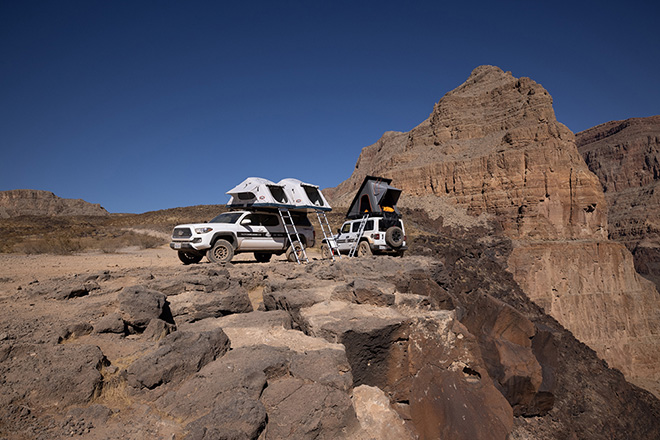
Planning and packing for a trip is an important part of the process. While most people may never participate in a true long-form overlanding trip that spans multiple countries or continents, many will experience their own off-the-grid adventure or weekend car camping with the family. Regardless of your style of travel, there are a host of products that may be considered to bring along and have on hand to ensure comfort, safety, and overall a good time.
By no means are the following suggestions the be-all and end-all for overlanding. They are simply products I’ve used and have tested on my personal trips and travel. I also do not consider myself a true overlander, but more of an enthusiast and car camper with some experience on the trails and I’ve had my fair share of exploration.
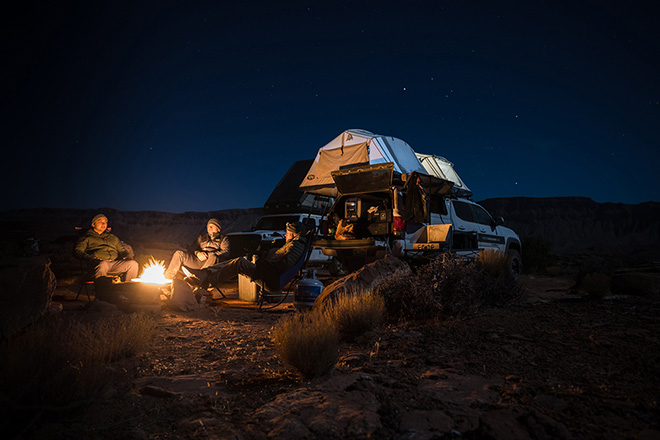
Each outing varies and it’s best to plan for the environment, climate, and overall logistics for the trip accordingly. I focused on equipment and accessories that can be used on most overlanding-style trips that can fit various vehicles without diving deep into actual aftermarket vehicle modifications. Some items may be a necessity, while others are more of a luxury. But however you travel, be prepared and enjoy the time outdoors.
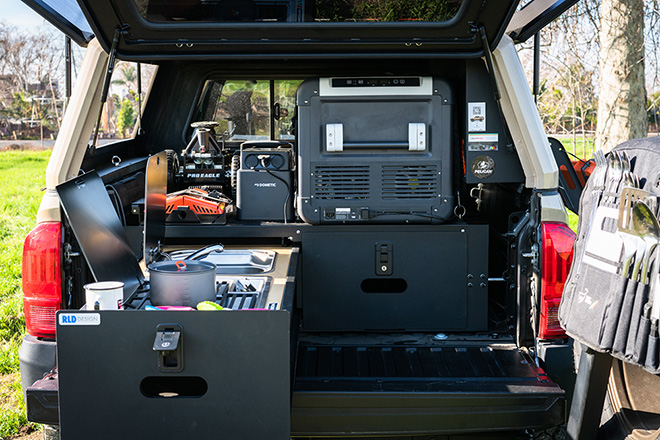
First Aid
Safety comes first. No matter what type of trip you’re on, a good first aid kit can literally become a lifesaver. I keep a first aid kid in each of my vehicles 100% of the time. You never know when you’ll need something as small as a bandaid for a cut, medication for a fever, or other supplies for a more serious incident. Proper basic medical training is recommended for anyone as this may come in handy while on the road. Another tip is to educate yourself on how to use the contents of the first aid kit correctly.
Adventure Medical Kits provide a wide variety of first aid kits for various outings. They are available in numerous sizes that can accommodate multiple people for many days. What I particularly like about these kits are that they come complete with most supplies that are needed and there are specific kits for various outings such as travel, mountains, or marine. They even have a kit for adventure dogs. I opted for the Sportsman Series 300 as my main kit as it has a comprehensive collection of supplies in a convenient system that is portable enough to keep in a vehicle without taking up much space and has enough supplies for 6 people for up to 7 days.
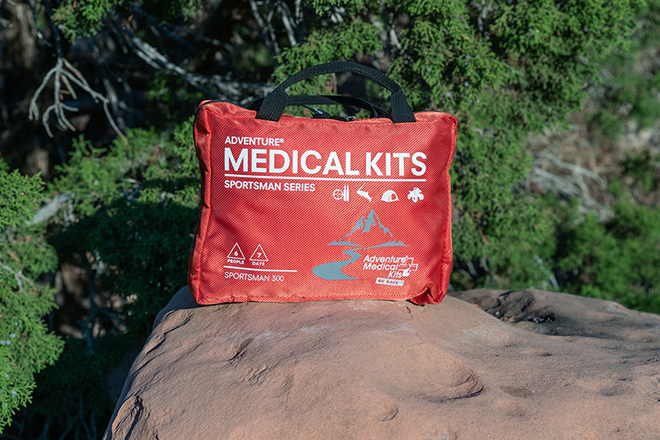
For those looking for something a bit more compact, VSSL makes an ultra-portable kit that easily fits in a glove box or pack so you can ensure you have something with you at all times. Two sizes are available with a standard size and an even smaller First Aid Mini. The standard-sized VSSL First Aid Kit is waterproof and doubles as a flashlight and a compass. The beauty of the small size is in its portability, making this great for day hikes when leaving camp. With its lightweight nature, you can leave it in your daypack and not worry about it taking up much space or adding too much additional weight.
Both of these brands provide the option to refill the supplies after use. But there may be additional supplies that are needed such as specific medication, sunscreen, and even insect repellant.
Navigation
While many modern vehicles are well-equipped with on-board navigation, these may lose reception when in remote locations and won’t be able to account for closed roads or off-road trails. Maps, Waze, or Google Maps are solid apps for most road trips, but when you’re looking to find new trails to tackle then the onX Off-Road app is a nice solution. onX uses GPS to find open, closed, and featured trails nearby your current location and provides photos, difficulty ratings, and detailed trail descriptions.
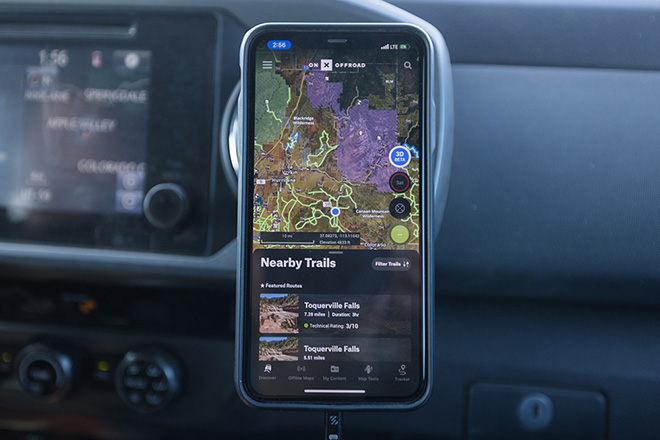
There’s also the option to track your trip and save waypoints, which can come in handy later on if you plan on revisiting or sharing the info with a friend. You can also download the maps ahead of time for offline use. There are a host of features available that can be used across your devices. But membership is needed outside of the trial period for only $29.99 per year (USD) to access much of the off-road content.
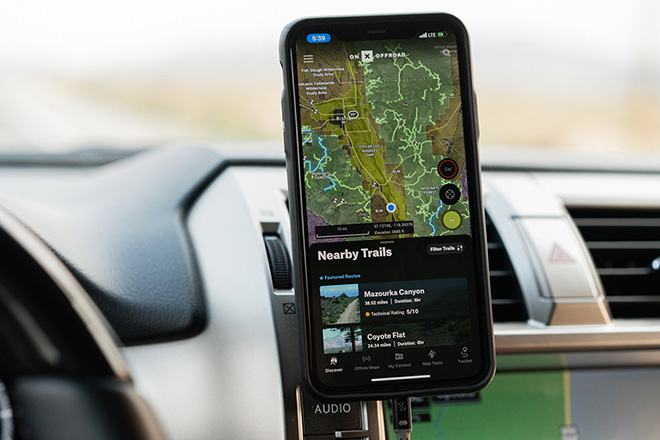
For more extreme and long-term overlanding travel, GPS alone may not cut it, and relying on technology may leave you in a tough position if something were to fail. Learning some navigation with paper maps is something highly suggested. On my last trip to remote areas of the Grand Canyon where we were completely off-grid with no reception, we relied on our experienced guide (shout out to Todd Rogers at Four Points Adventures!) and his navigational skills using a paper map. It was our first time in this area and having someone with experience makes a world of difference while providing the confidence and peace of mind to be able to enjoy the journey itself.

Communications
Communications are an essential part of overlanding. Whether on an extended trip or a short trail run, the ability to simply communicate between vehicles, between spotter and driver, and in the event of an emergency having a way to reach out for help is vital. Most experienced travelers will combine a few options for communication from a cell phone, radio, satellite phone, or satellite communication device. The decision of which to use is a personal one and you’ll have to do additional research based on your location to determine which may be the best fit.
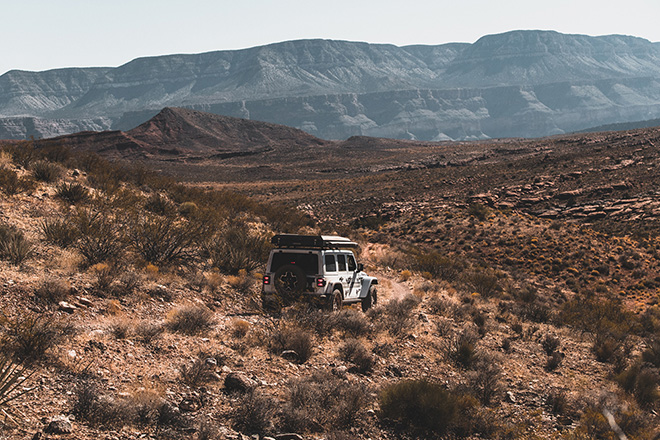
For most travel, these days cell phone reception is readily available and accessible by most cell phone providers. But when visiting remote locations it’s highly unlikely a cell tower will be nearby. Cell boosters such as weBoost and SureCall can help amplify existing cell signals for 3G, 4G LTE, and 5G, but require proper installation. And again, since they only boost cell signals, there needs to be a signal present. I don’t have much experience with these, but close friends say they do work so I wanted to be sure to include them as an option.
Now in the event that you are stuck in the middle of nowhere but do need to send a message or SOS signal, there are a couple of solutions. I had the opportunity to use the Somewear satellite communicator recently. This satellite hotspot works globally and has an easy-to-use interface with its app. The device itself is incredibly compact and can fit in a pocket of your jacket or pants, attached to a pack, or simply set inside the vehicle without taking up any space. It is also durable, water-resistant, floats, and has long battery life.
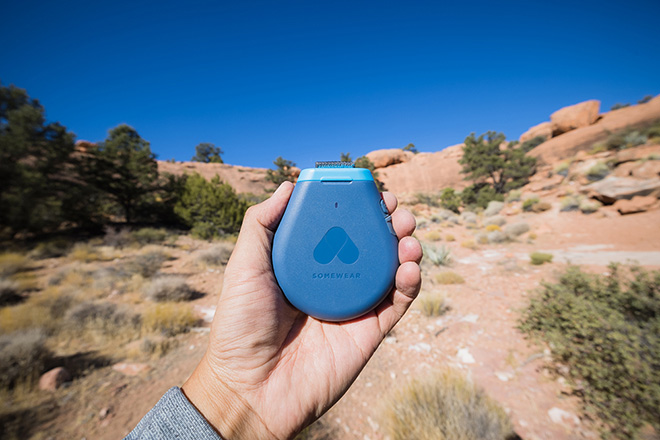
The Somewear device uses your phone, so you’ll have to make sure to have a way to keep your phone charged while traveling, and turns it into a satellite communicator. You simply connect and message someone using the app and once the device picks up communication with a satellite it’s able to send it out. Note messages often are not sent out or received immediately as the device needs to wait for a satellite to connect with.
I found it easy enough to use and message my wife while off-grid to communicate. The onboard GPS and interval tracking allow for loved ones to track your location and follow your path. The app can also provide weather reports. Now in the case of an emergency, it’s as easy as flipping down the cap on the top of the device and pressing the SOS button to send a signal for help. The device is $279.99 and requires additional fees for the service.
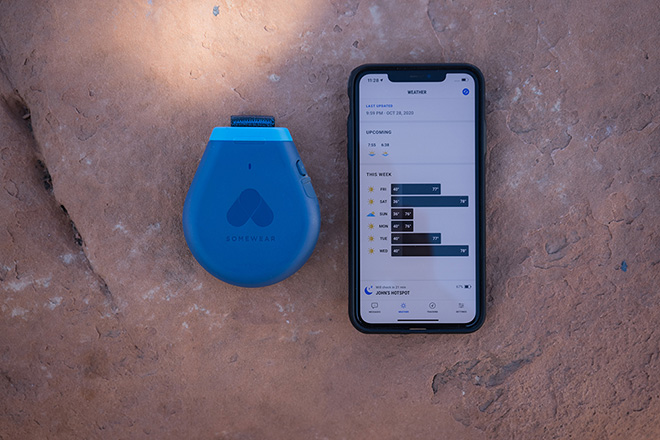
Radios are also an essential tool for communications on any overlanding trip or trail run. Not only do they allow you to communicate between vehicles easily and effectively, but in the event of an emergency, they may be the only line of communication for help.
There are a few options including FRS (family radio service), which is a private, two-way, and short-distance service that does not require a license, making it one of the more popular choices. GMRS (general mobile radio service) radios work similarly and use specific frequencies with designated channels within those frequencies that aren’t available to FRS radios, but they do require a license to operate in the U.S. There are also Ham radios, which have increased coverage and range, but require a license as well. CB (citizens band) radios are popular as they are inexpensive and do not require a license, but the range is shorter and it may have some static/noise.
Choosing an overlanding radio may be a matter of preference and need. It’s a tricky topic and can be a bit overwhelming when you start comparing radio frequencies, citizen bands, and megahertz. I don’t have much experience with many of the options but have used a couple of radios from Midland and a couple of options via Amazon and they both worked well enough for my needs. But again, these weren’t for extended trips or across countries or continents that may have different local laws. Make sure to do your research beforehand.
Recovery Gear
Another essential element for overlanding is recovery gear. Not only will this help in the event that you get stuck, but you may save someone’s day by helping them get out of a bad situation. It’s quite common to see other enthusiasts help each other out on the trails.
A recovery kit is crucial for instances of getting stuck in the mud, snow, rain, water, or even from the heat. What is needed depends on the type of trip, various locations, and also the vehicle you have. Over time and with experience you’ll learn what works and what doesn’t. With any piece of gear, the knowledge and understanding of how to properly use each item are key.
Some companies offer all-in-one kits that are convenient but should also be treated as a starting point as each kit may vary and may not be 100% complete. One kit that I recently came across from Atlantic British is the Adventure Offroad Recovery Kit from CampBoss 4×4. This kit is robust with high-quality recovery gear including a kinetic recovery rope, winch extension rope, soft shackles, tree protector, recovery blanket, and a pair of heavy-duty gloves – all in one premium carrying bag. The kit was designed by Jase Andrews, who is an overlanding specialist based in Australia and he put a focus on safety when creating the kit. The overall kit is lightweight and is portable enough to keep in the rig all of the time or place in it right before the next outing.
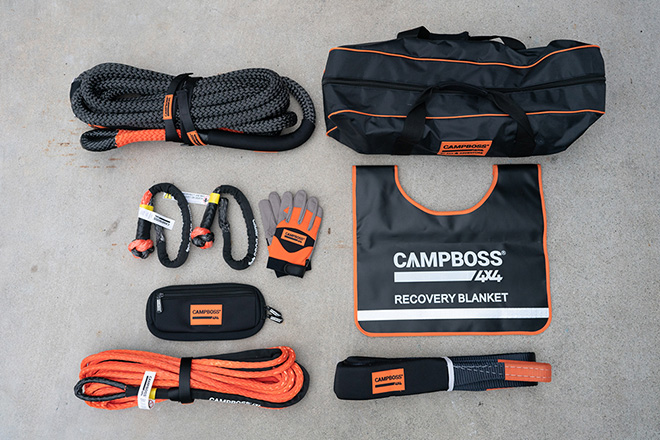
Recovery boards are a simple solution to provide much-needed traction to a vehicle when it’s stuck in mud, sand, or snow. They are considered one of the safer options that require minimal training to safely use. MAXTRAX is the leader in the category and offers various sizes, styles, and colors. Constructed from fiber-reinforced, engineering-grade nylon that won’t break, crack or stress whiten after use and backed by a lifetime warranty, these recovery boards are built to last. There are multiple glove handles and they can mount on many roof rack systems. In a pinch, they can also be used as a shovel.
Another item to consider for overlanding recovery is a Trail Jack also known as a hi-lift jack. These jacks are designed to be versatile and are used to winch, hoist, and lift you out of any situation. They can help lift your chassis up if you find yourself stuck on a large rock, help to change a tire, and be used as a makeshift winch to pull a vehicle.
You’ll also want to consider how to mount the jack. Whether on a bumper, roof rack, or inside the bed of the truck you’ll want to ensure they are mounted properly and secured to avoid the annoying rattling noise, especially on a bumpy trail. Brands such as Hi-Lift, ARB, Smittybilt, and Pro Eagle make some very solid options. One thing is for certain, you must use extreme caution when using one of these tools as they can also be dangerous and require some education to properly use them.
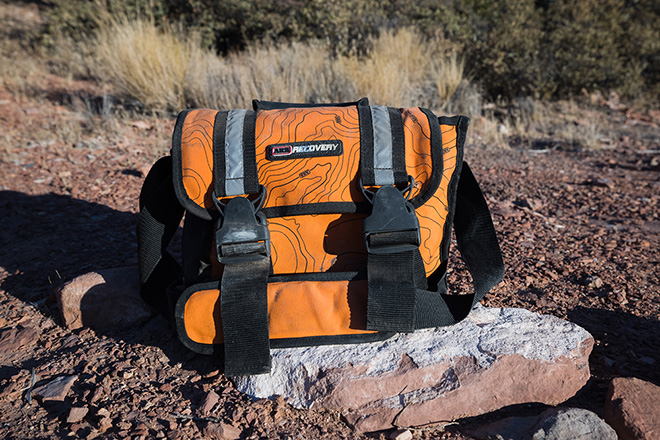
A shovel is also one overlanding tool that you will want to keep on hand. Not only can you use it for getting unstuck in the elements, but it can come in handy when nature calls. I have the Front Runner Outfitters D-Grip Camp Shovel that attaches nicely to their rack system and is very convenient and accessible. There are smaller portable shovels as well including the SOL (Survive Outdoors Longer) Packable Field Shovel that assembles quickly in a lightweight, portable, and affordable package.
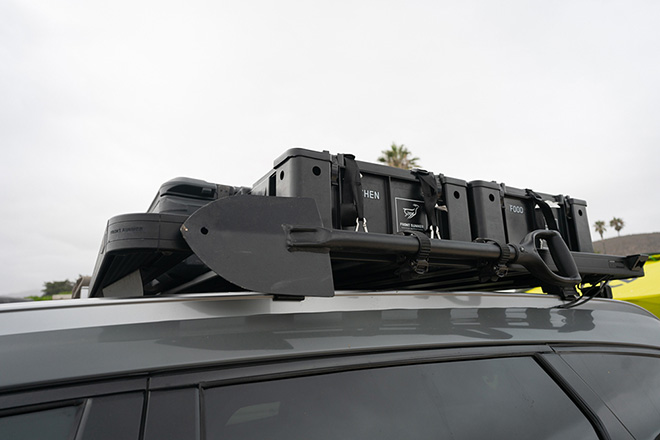
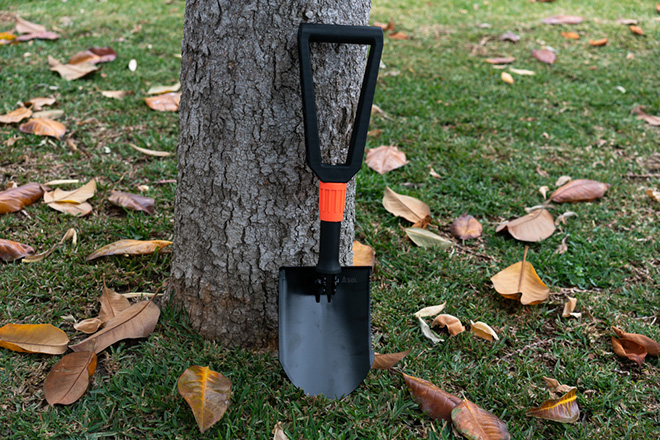
Other recovery tools and things to keep in mind would be to ensure your kit has a tire gauge to be able to check air pressure, which is key before any road trip or while on the trails. If you decide to air up and air down you’ll need a solution to do so with an onboard air compressor such as the ones from ARB, Viair, or Power Tank. A full-size spare tire such as the Toyo Tires Open Country A/T III and wheel is also a good idea as the last thing you want is to be stuck in a remote location with a flat tire.
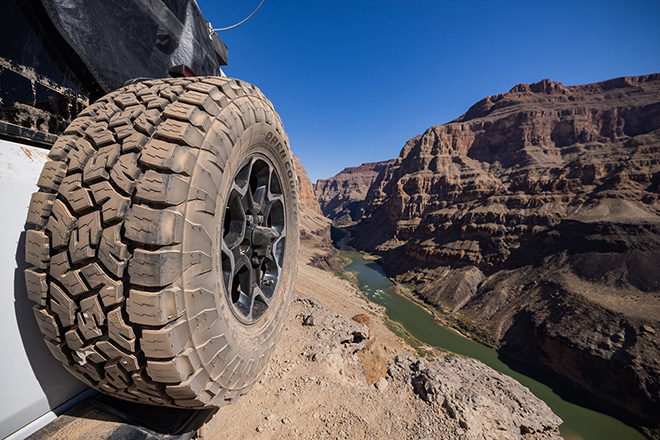
Car Camping
One component and my personal favorite part of overlanding is camping. Many of the products and gear obviously overlap with more traditional camping and outdoor activities, but some are made specifically for car camping. I’ve selected a handful of products that I’ve enjoyed on a few trips.
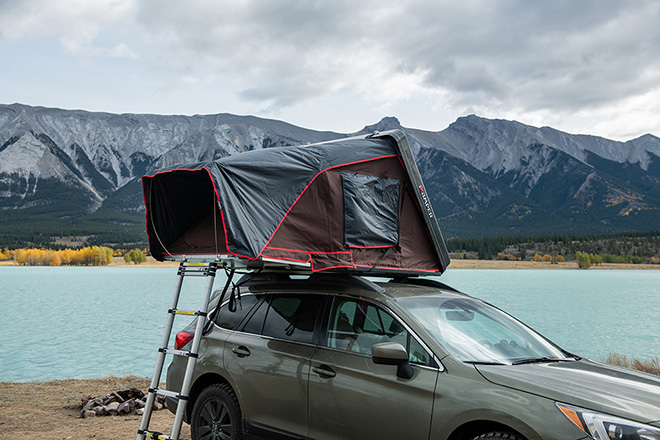
There are several options for sleeping while overlanding. The one that makes the most sense for you may depend on the vehicle you own, whether you have a truck, SUV, or a capable AWD/4WD car. Ground tents are popular for their low cost, small storage requirements, and familiarity as most have started their camping adventures using a ground tent. Others may elect to sleep inside their vehicle and with new brands such as Luno providing easy-to-set-up inflatable mattresses built for car camping, this might be one of the most straightforward solutions. Rooftop tents have grown in popularity within the last decade and there are several brands that make really good options such as Thule/Tepui, iKamper, GFC, and more. This is the most expensive sleeping option and there are a couple of styles to choose from that include soft tops to hardshell tent designs, each with its own pros and cons.
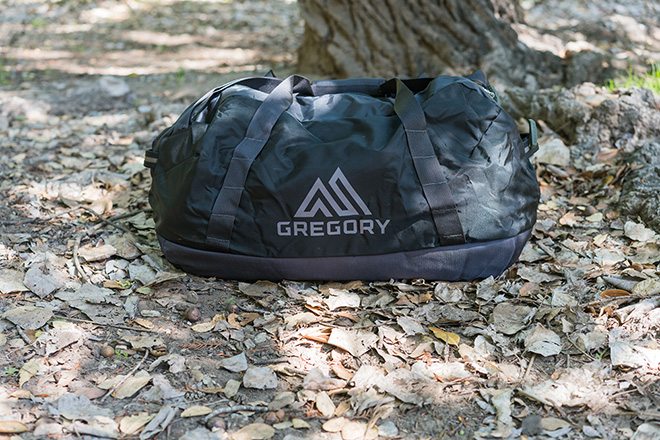
I prefer a duffel for all of my clothes and personal items. It’s versatile, portable, and practically can fit in any crevice of the overlanding vehicle while having ample room for all of the contents, which are usually separated into packing cubes. The duffel I’ve been using lately is the Gregory Supply (60-liter) duffel for the weekend and slightly longer trips, although I would suggest at least the 90-liter for longer excursions.
This bag is solid and constructed with Kevlar, which is integrated into the bottom fabric for more durability and abrasion resistance. I can rest assured that the bag can withstand heavier loads and some abuse while traveling. An oversized T-zipper makes it very easy to open and close even with gloves on. The padded grab handles and a removable over-the-shoulder strap provide sturdy and comfortable transportation options. To top it off the entire bag can fold down into the zippered side pocket for convenient storage when not in use. The 60-liter version is also very reasonably priced at $89.95.
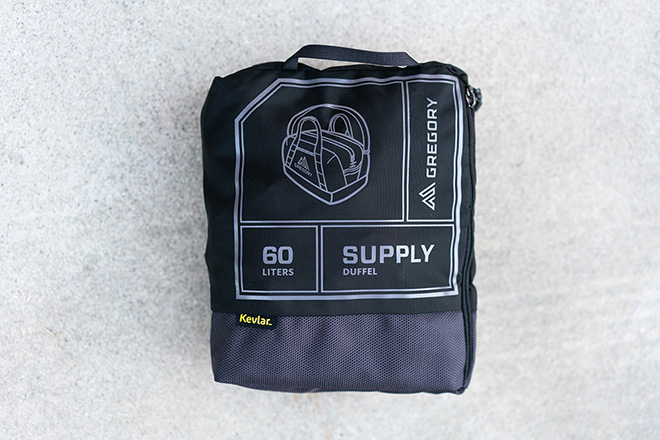
A good-quality camp chair is something I keep in my vehicle at all times as I’ve used it now for beach trips, sporting events, and even eating take-out from the back of a car. After a day on the trails, hiking, or just after a long drive, a comfortable chair is key for relaxation. One of my favorite chairs is the Nemo Equipment Stargaze Recliner Luxury Chair. It’s easy and simple to construct in under a minute. The key feature is the ability to lean back and recline with a nice view of the stars. It’s extremely comfortable when lounging by the fire with the integrated headrest and convenient with the cupholder and stash pocket for a phone. It’s lightweight and packs down into a portable case with a carry strap.
Another favorite chair is the Front Runner Outfitters Expander Chair. This is an even more versatile chair that doesn’t require any assembly. I’ve taken my Expander chair to events and even photoshoots and have used it as a director’s chair, but the beauty in this chair is that it allows for upright sitting which makes it better to use ergonomically while working from a table. It has a cup holder, pocket, and folds down easily with a nice carrying handle. It is a little heavier than a traditional camping chair, but it is also very strong and should last a while.
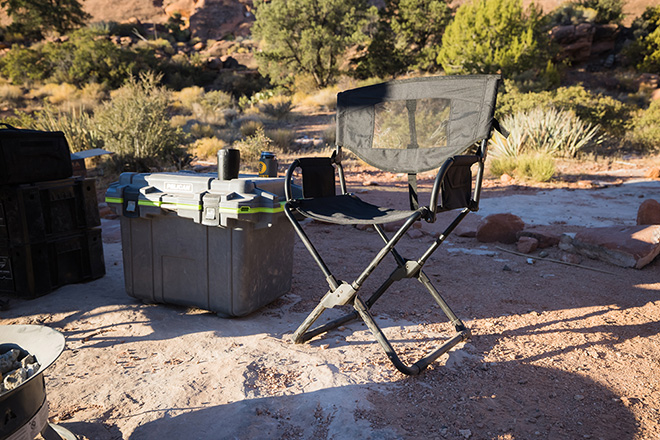
One last seating option is the Hillsound BTR Stool. This ultra-portable and incredibly lightweight stool is extremely convenient. On my last trip, I was able to place it in the water bottle pocket of my backpack while hiking around. The small size shouldn’t deceive anyone as I found it to be quite comfortable and much better than sitting on the floor. This can come in handy while on a hike to stop and take a quick water or lunch break or while fishing. Overall, it’s a great little seating option.
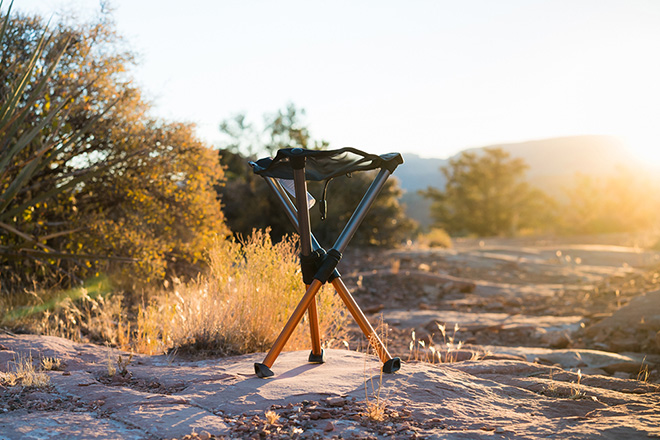
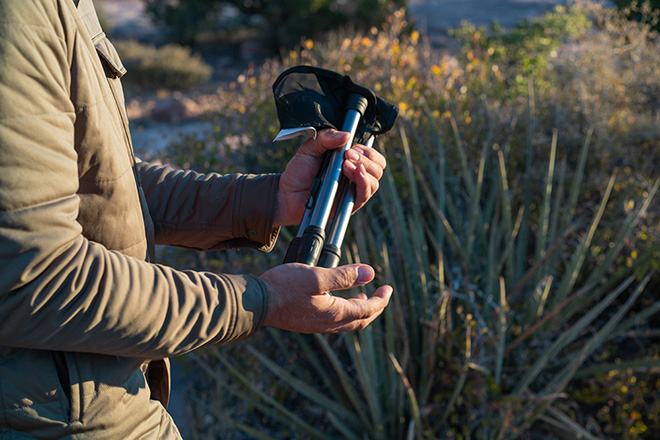
A good table is a necessity when camping either to eat, work, or simply to help organize things and keep them off the dirt. The ARB Compact Aluminum Camping Table is a great option that I found via Atlantic British. It is easy to set up, provides a sturdy surface, and is portable while folding neatly back into its own carrying case to easily throw into the back of the rig. The size (34 (L) x 27.5 (W) x 27.5 (H) inches) is just big enough for up to 4 people. The aluminum surface is heat-resistant when placing hot food prep items on it.
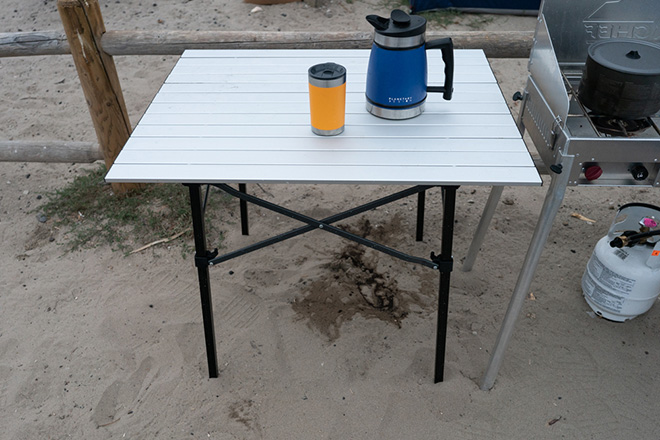
Many overlanders outfit their rigs with a portable fridge to keep food and beverages cold. While many coolers now offer amazing ice retention and are a solid option, on extended trips the functionality of a portable fridge is the preferred way to go. They provide more versatility and options while on the road. Some even have a freezer compartment – ice cream while camping is a game-changer. Brands such as Dometic and ARB have quality options to choose from.
The only issue is that portable fridges do require power, which can be supplied a few different ways including directly into a vehicle’s 12v cigarette lighter socket (best for shorter trips) or a dual battery setup to keep the fridge with constant power and avoid draining the starter battery (best for extended trips). The latter option does require a bit of work to properly set up. Additionally, solar panels can be used when the vehicle is not on to keep the battery full without having to worry about running the vehicle to charge the battery.
Another option is to plug the fridge into a portable power bank when the vehicle is off to keep it powered. I personally use a combination of plugging into the vehicle directly while driving and a portable power bank when at camp. This provides me with ample power to also charge my other devices such as cameras, laptops, and cell phones. The Anker PowerHouse II 800 is a go-to solution that has become a hub for all things that require power. It’s compact and portable and packs a punch in power.
It has 2 AC outlets, 2 USB-C outlets, 4 USB-A ports, one vehicle-class outlet, and 2 DC outlets, which provides enough options to run practically anything from appliances (does not support devices rated over 500w) to mobile devices. I use it to keep my Dometic cooler plugged in and running when at camp. You can even power a pellet grill such as a Traeger, with the tailgate-sized version on my wishlist so I can smoke some meat at camp. For those who work and cook from the road, a portable power station is essential.
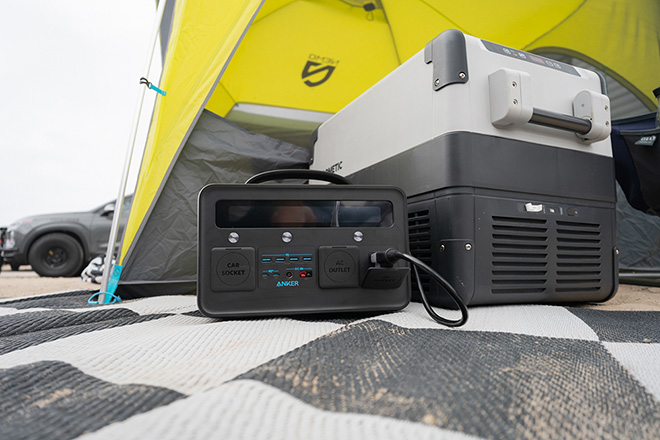
Tools
There are a few tools that should be included in every overlanding vehicle and without going too deep into which mechanic tools to have on you, a general rule of thumb is to cover all of your bases and make sure you have the correct tools to change a tire, remove a bumper, or tighten down anything that may become loose such as a bolt on the rooftop tent. The tools themselves may vary but each overlanding kit should also include items such as zip ties, duct tape, safety glasses, a road flare, hammer or rubber mallet, safety gloves, utility scissors, super glue such as J-B Weld, paracord, and ratchet straps.
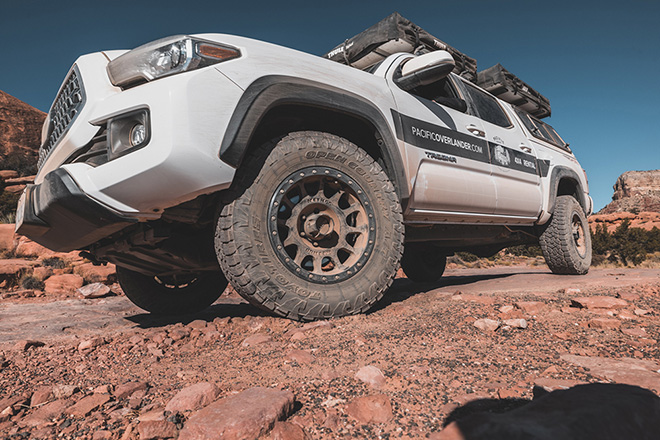
The Step 22 Pangolin Tool Roll is my go-to for an overlanding tool bag. It’s cleverly designed as a combo tool roll and bag, complete with a modular configuration to be able to assemble the right kit for your travels. In the event of an emergency, having your tools readily available and organized will ensure that you’re able to access the tools quickly. It also helps to be able to eyeball what may be missing when reorganizing or repacking. The tool roll is constructed from a 1,000 Denier C.R.A.W.L. (coated rugged all-weather layer), which is heavy-duty to withstand the weight of the tools and is durable enough to take a bit of a beating.
A quality knife can go a long way. On trips, I like to have one within arm’s length in case of emergency. On overlanding trips with water crossings or other obstacles, there could be a chance of being trapped in a vehicle and a knife can help you get out of a situation by cutting a stuck seat belt or breaking a window to escape. The Benchmade Bailout is one of my favorite knives for this reason as the pommel with glass breaker is built-in. It’s incredibly well-engineered with a grippy aluminum handle and a super sharp steel blade. It opens quickly and locks into place. The slim and ultra-lightweight design makes it easy to carry and wear with the integrated clip. I love the charcoal gray blade that matches well with the woodland green anodized aluminum handle.
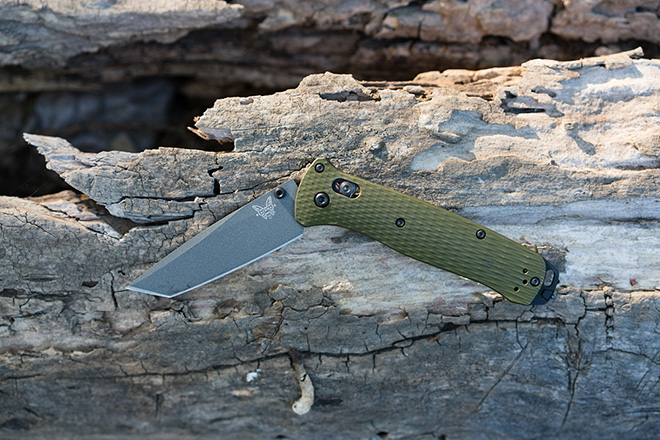
I tend to keep a multitool on hand in my vehicle at all times. The Leatherman Signal is a great all-around tool with just the right tools that are convenient and can be kept in the car or a pack for easy access. With a total of 19 built-in tools, the Signal has a few key tools that may be used frequently, from the pliers and wire cutters to the mini saw and knife. What makes this great for the outdoors is the integrated safety whistle, firestarter, and of course a bottle opener.
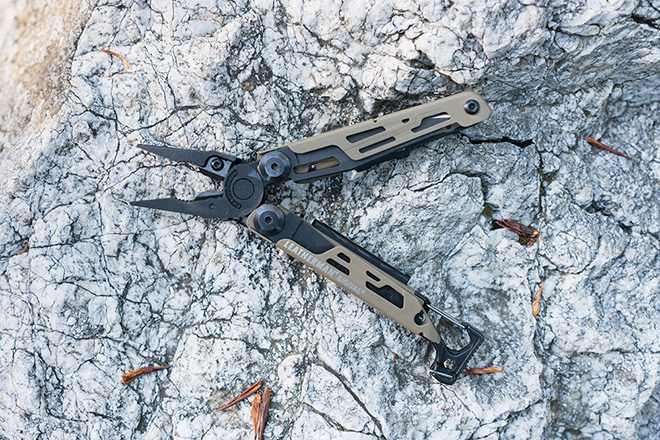
When camping I also keep a small hatchet on hand in case I need to cut wood for a fire. I haven’t personally needed to cut heavy brush off a trail, but in those instances, a hatchet can prove to be important. I use the Gerber Pack Hatchet as it’s simple and does the trick. It’s got a nice soft grip and sharp edge. It’s highly portable and weighs a mere 20.8 ounces.
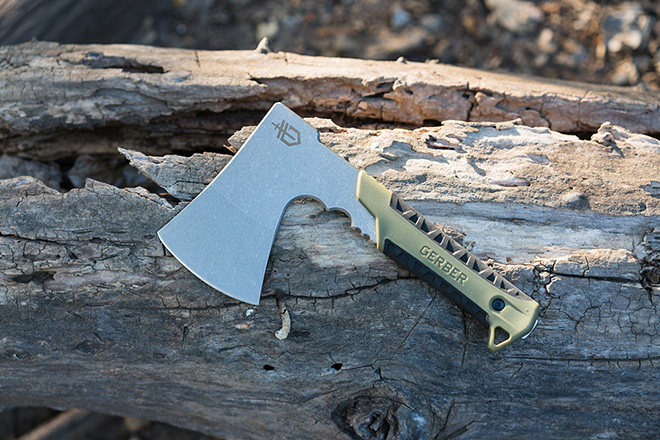
Lighting is an important factor when camping or overlanding in remote areas. Often at night, the only natural light is provided by the moon and stars so you’ll want to be equipped with a proper lantern, flashlight, and/or headlamp. These are easy enough to keep in the vehicle or in a pack. There are many solid options for lighting.
My personal favorite lantern is the new BioLite AlpenGlow 250. It’s small and lightweight but provides ample lighting. It provides 250 lumens and can run up to 200 hours on low. It can also act as a power bank to recharge small devices. The rechargeable battery does take a couple of hours to get a full charge via micro USB. The lantern has an IPX4 rating and can withstand some rain and water splashing. What really makes this stand out is the versatility with its various modes that include: Cool & Warm White (Dimmable), Candle Flicker, Single Color, Multicolor, and Cycling Colors, which are fun and easy to use. It has a hook to be able to hang upside down from inside a tent.
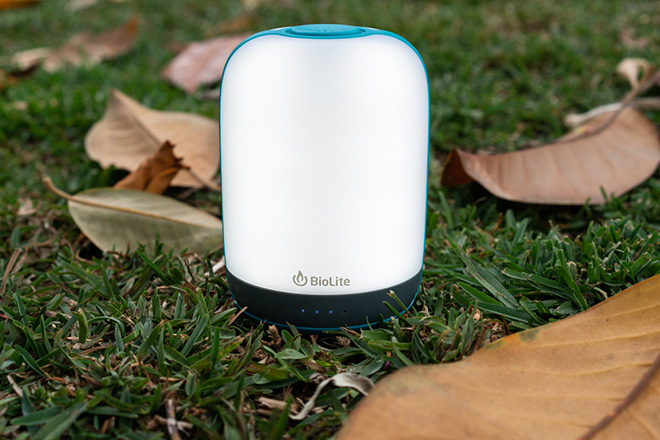
I use Pelican flashlights and headlamps. Their products are used by first responders and professionals alike. The Pelican 2765 Headlamp provides up to 155 lumens, which is plenty of light and can run for up to 8 hours. The built-in battery level indicator is a standout feature. The cloth headband is comfortable and hardly noticeable after a while. The Pelican 7600 tactical flashlight is rechargeable via the USB port and has three LED colors as well as various selectable modes. It provides an impressive 900 lumens of light from the small device. The flashlight is durable and strong with a hard-anodized finish that has a smooth feel and grip. It is IPX8 rated and can be submerged underwater and is backed by Pelican’s lifetime guarantee.
Finally, the last piece of overlanding equipment that I recommend and hope everyone packs with them is a trash bag. This is an important addition for any overlanding or camping trip as you’ll want to leave your campsite just as clean as you found it. Nature is something we all enjoy and must do our part to maintain and this begins with a leave no trace mentality. I use the Kelty Trash Pak that is well thought out and can mount to the exterior of a rig and on the spare tire instead of kept inside the cabin, which can get pretty gross after a while.
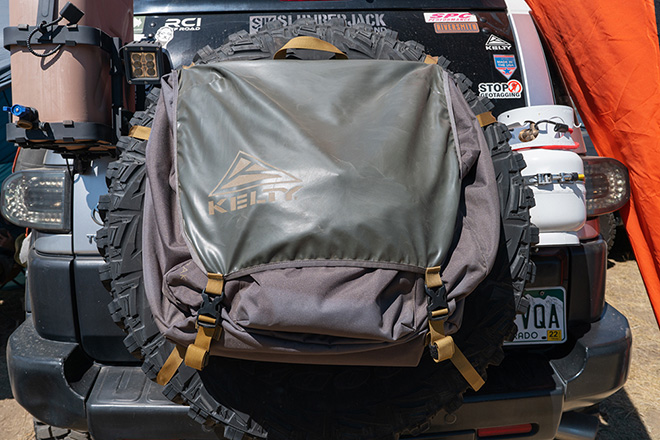
What I like about the Trash Pak is its durable construction made from a 600D poly exterior with vinyl-coated areas for improved UV and water resistance. The interior is coated with vinyl for easy clean-up, has a bottom drainage hole, and interior loops to hang trash bags. The back is padded to protect the vehicle and it closes securely with two outer clips and the interior cinch closure. It also has a front zippered pocket that can hold extra trash liners.
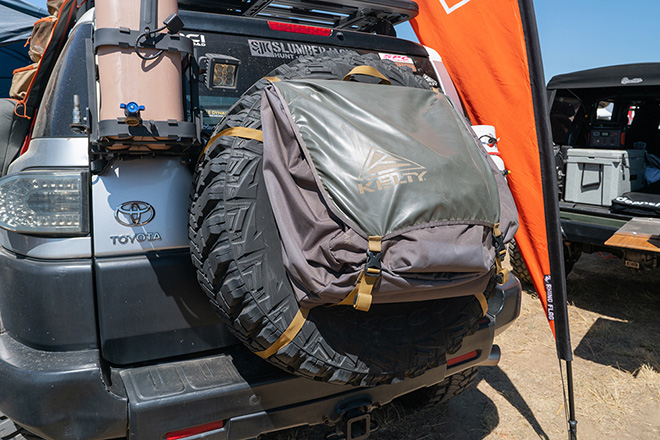
If you’re interested in a personalized overlanding experience there are a couple of companies that we love for rental rigs as well as full guided tours – check out Four Points Adventure and Pacific Overlander.





 Carry Awards
Carry Awards Insights
Insights Liking
Liking Projects
Projects Interviews
Interviews
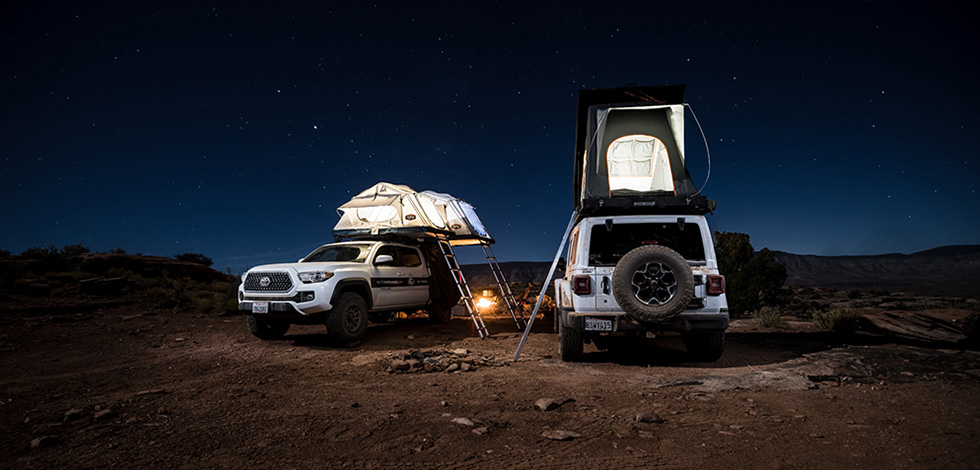



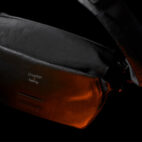

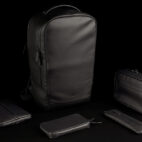
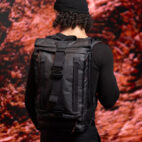




2 thoughts on “The Ultimate Guide to ‘Must Have’ Overlanding Essentials”
Comments are closed.